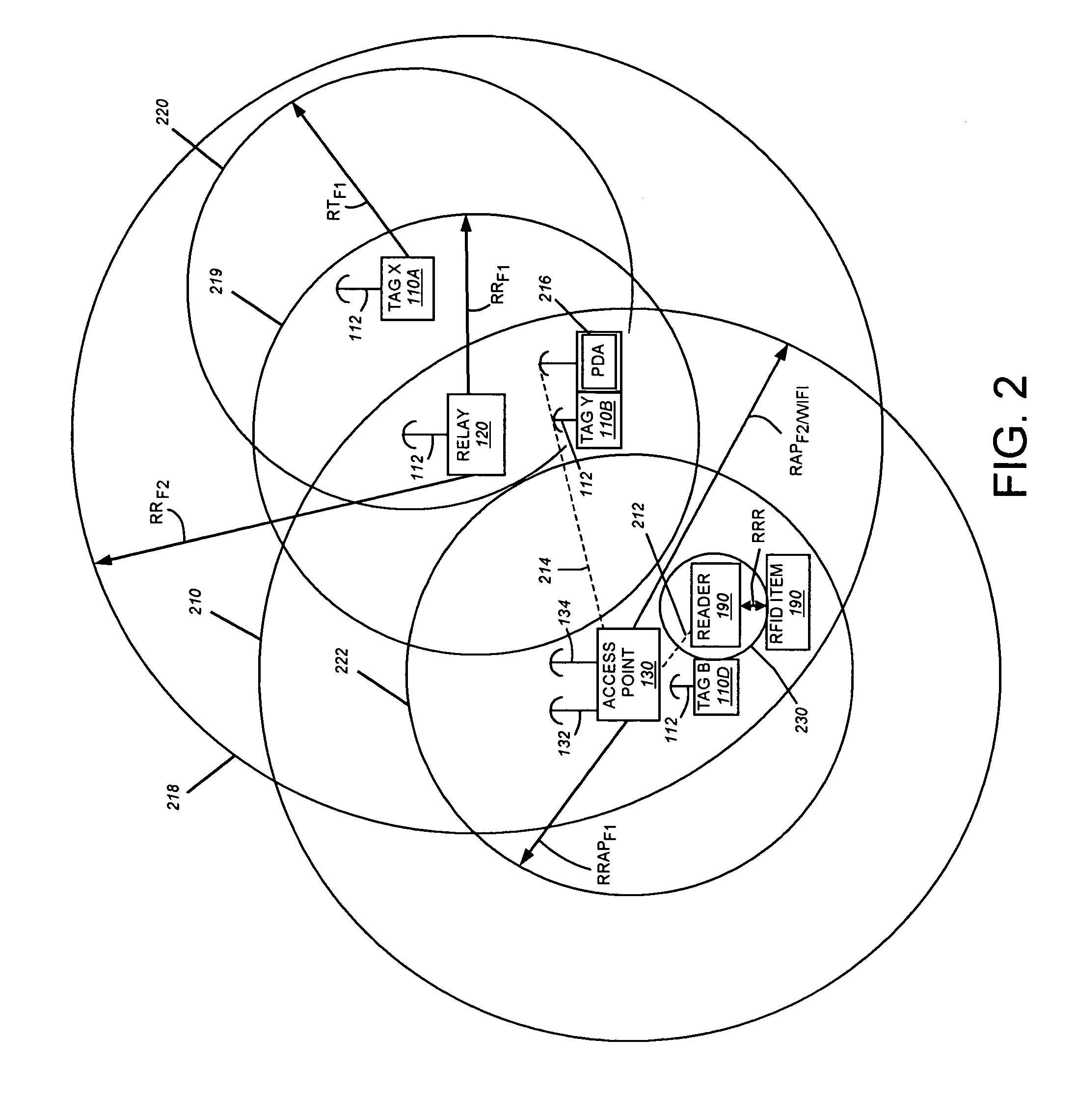System and method for locating and communicating with personnel and equipment in a facility
a technology for facilities and personnel, applied in the field of facility control, management and communication systems, can solve the problems of increasing the cost of gps units, attenuating the reception of satellite signals, and increasing the redundancy of facilities, and achieve the effect of increasing redundancy
- Summary
- Abstract
- Description
- Claims
- Application Information
AI Technical Summary
Benefits of technology
Problems solved by technology
Method used
Image
Examples
example 1
[0205]A warehouse has 30 employees and 50 types of equipment to perform its work. Not all employees have been trained and licensed to operate all the equipment. Employees each have assigned to them a PDA for the shift. A customer truck has arrived two hours ahead of schedule and needs to be loaded from the warehouse. While the warehouse has the authority to simply ask the truck driver to wait for his scheduled loading, with the system installed, it believes it can load the truck without delaying other customer schedules.
[0206]Instructions are sent over the WiFi LAN to PDA #8 to retrieve Pallet #73 (which is located by its asset tag location to be in Bay 56 of the warehouse). The system does not receive a response back from PDA #8, by WiFi LAN, confirming action taken to retrieve the pallet. A trigger event of non-response causes the system to look up which employee has been assigned PDA #8 for the day. It finds that employee K has been assigned the PDA. The employee is located, by h...
example 2
[0210]A large company with several thousand salespeople divides the U.S. into 50 regions, each with a small administrative support office. The regional support office is used mostly for training, but also has 15 cubicles for salespeople to employ when they find it productive to do so. The salespeople come and go at will, and are supported by two administrative secretaries, permanently assigned to the facility. As a salesperson arrives, their RF (Tag) badge is automatically recognized by the system and method of this invention, which is installed in the regional office and linked via office LAN, telephone and Internet communication to at least one location server and a management server / application. A salesperson can occupy any empty cubicle he or she wishes, and if none are available, a salesperson may use the meeting room space. The WiFi system will recognize their laptop IP address (already associated with them in the company records and management server), and permit LAN access, ...
PUM
 Login to View More
Login to View More Abstract
Description
Claims
Application Information
 Login to View More
Login to View More - R&D
- Intellectual Property
- Life Sciences
- Materials
- Tech Scout
- Unparalleled Data Quality
- Higher Quality Content
- 60% Fewer Hallucinations
Browse by: Latest US Patents, China's latest patents, Technical Efficacy Thesaurus, Application Domain, Technology Topic, Popular Technical Reports.
© 2025 PatSnap. All rights reserved.Legal|Privacy policy|Modern Slavery Act Transparency Statement|Sitemap|About US| Contact US: help@patsnap.com



